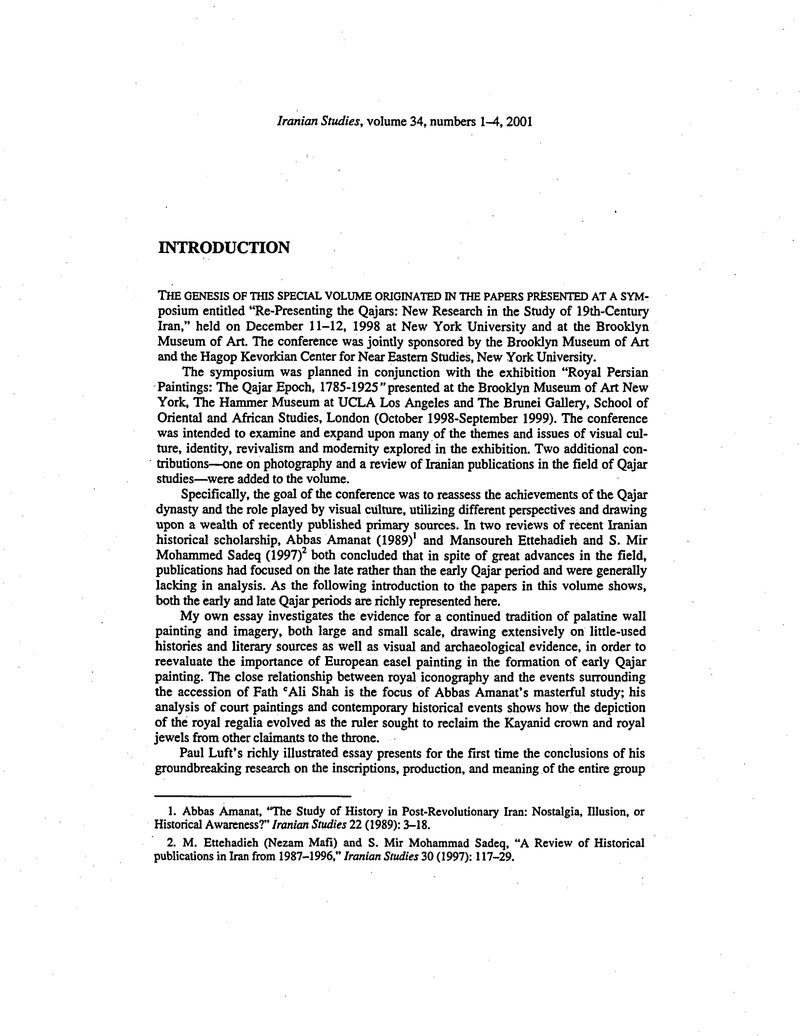No CrossRef data available.

1. Amanat, Abbas, “The Study of History in Post-Revolutionary Iran: Nostalgia, Illusion, or Historical Awareness?” Iranian Studies 22 (1989): 3–18.CrossRefGoogle Scholar
2. Ettehadieh, M. (Nezam Mafi) and Mir Mohammad Sadeq, S., “A Review of Historical publications in Iran from 1987-1996,” Iranian Studies 30 (1997): 117–29.CrossRefGoogle Scholar
3. See my essay “Making History: A Monumental Battle Painting of the Perso-Russian Wars” in Proceedings of The Qajar Epoch: Arts & Architecture Conference. London 1-4 September, 1999Google Scholar (forthcoming) for further evidence of the first phase of construction under Fath ᶜAli Shah and particularly the history of the Ishrat Ayin Palace.
4. First noted in Layla S. Diba with Ekhtiar, Maryam, Royal Persian Paintings: The Qajar Epoch, 1785-1925 (London and Brooklyn, NY, 1998), 42Google Scholar, wherein the ruler is misidentified as Nasir al-Din Shah. I am grateful to Manijeh Bayani Wolpert for correcting the identification of the ruler.